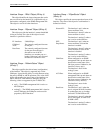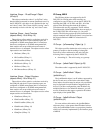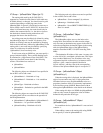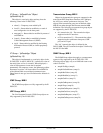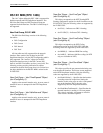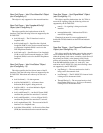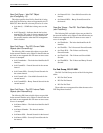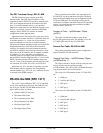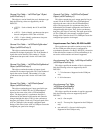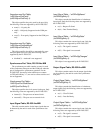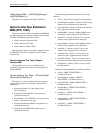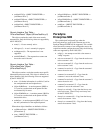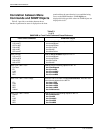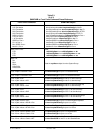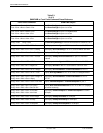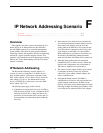
ACCULINK 317x E1 DSU/CSU
E-12 December 1996 3170-A2-GB20-20
General Port Table – “rs232PortType” Object
(rs232PortEntry 2)
This object is used to identify the port’s hardware type.
Only the following values are supported by the E1
DSU/CSU.
• rs232(2) – Used to identify the AUX and COM
ports.
• rs422(3) – Used to identify synchronous data ports
that are configured as EIA-530A or RS-449.
• v35(5) – Used to identify synchronous data ports
that are configured as V.35.
General Port Table – “rs232PortInSigNumber”
Object (rs232PortEntry 3)
This object contains the number of input signals
contained in the input signal table. This is the number of
signals that can be detected. This number is 2 for the
synchronous data ports and 0 for the AUX and COM
ports.
General Port Table – “rs232PortOutSigNumber”
Object (rs232PortEntry 4)
This object contains the number of output signals
contained in the output signal table. This is the number of
signals that can be asserted. This number is 2 for the
synchronous data ports and 0 for the AUX and COM
ports.
General Port Table – “rs232PortInSpeed”
Object (rs232PortEntry 5)
This object contains the port’
s input speed in bits per
second. For the E1 DSU/CSU, the rs232PortInSpeed
object has the same value as the rs232PortOutSpeed
object. The input speed of a synchronous data port is
determined by the channel configuration and cannot be
changed through this object. Thus, for the synchronous
data ports, this object is read-only. The input speed of the
AUX or COM port is the currently configured speed.
Setting of this value for the AUX or COM port causes the
configured port speed to be changed.
General Port Table – “rs232PortOutSpeed”
Object (rs232PortEntry 6)
This object contains the port’
s output speed in bits per
second. For the E1 DSU/CSU, the rs232PortInSpeed
object has the same value as the rs232PortOutSpeed
object. The input speed of a synchronous data port is
determined by the channel configuration and cannot be
changed through this object. Thus, for the synchronous
data ports, this object is read-only. The input speed of the
AUX or COM port is the currently configured speed.
Setting of this value for the AUX or COM port causes the
configured port speed to be changed.
Asynchronous Port Table, RS-232-like MIB
The asynchronous port table contains an entry for the
AUX or COM port when the port is configured for
asynchronous operation. For the E1 DSU/CSU, the entries
in the table that are counters (rs232AsyncPortEntry 6–8)
are used to collect statistics and are not supported.
Asynchronous Port Table, “rs232AsyncPortBits”
(rs232AsyncPortEntry 2)
This object specifies the number of bits in a character.
Only the following values are supported by the E1
DSU/CSU.
• 7 – 7-bit characters. Supported on the COM port
only.
• 8 – 8-bit characters.
Asynchronous Port Table,
“rs232AsyncPortStopBits”
(rs232AsyncPortEntry 3)
This
object specifies the number of stop bits supported.
Only the following values are supported by the E1
DSU/CSU.
• one(1) – One stop bit.
• two(2) – Two stop bits. Supported on the COM port
only.
• one-and-half(3) – One and a half stop bits.
Supported on the COM port only.



